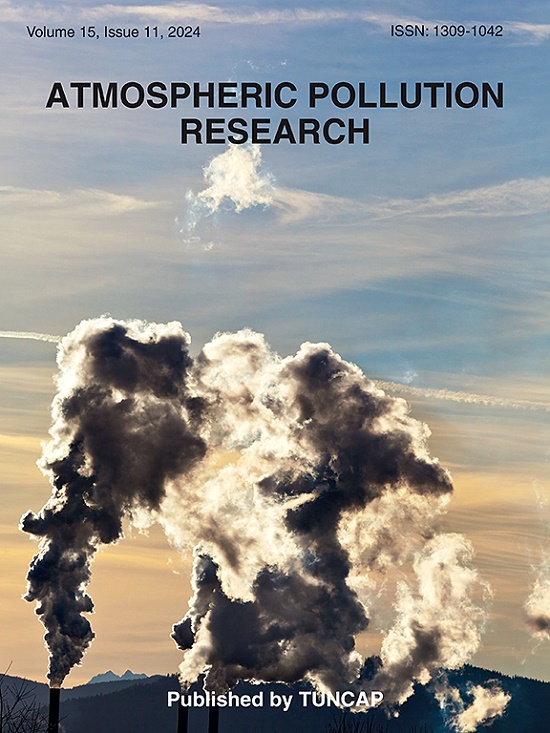Environmental impacts and costs of ozone formation in Bangkok Metropolitan Region
IF 3.9
3区 环境科学与生态学
Q2 ENVIRONMENTAL SCIENCES
引用次数: 0
Abstract
Ozone formation is an important environmental factor causing impacts on human health and ecosystem. Previous research relating to ozone formation often had limited scopes on direct emissions or focused on limited sectors of cities. This study aimed to quantify environmental impacts and costs due to ozone formation caused by energy generation, industry, agriculture, residential and commercial sectors, transport, fugitive gas emissions and waste treatment in the Bangkok Metropolitan Region (BMR) in 2022. The assessment applied spatially differentiated life cycle assessment framework, quantifying impacts on human health and ecosystem using local and global factors for on-site and supply chain emissions. The baseline situation in 2022 revealed that total emissions (on-site and supply chain) were 3.97E+05 tonnes of NOx and 1.15E+05 tonnes of NMVOC. NOx and the transport sector were the main stressor and hotspot causing impacts and costs of ozone formation in BMR. Total impact scores (on-site and supply chain) were 4.39E+02 disability-adjusted life year (human health impact) and 3.50E+01 species.year (ecosystem damage). The impacts were mainly contributed by on-site activities in BMR costing 6 billion Thai Baht. Scenarios were developed focusing primarily on the on-road transport since it was the hotspot causing health impacts and ecosystem damage. The scenarios indicated that upgrading fuel technology from diesel to compressed natural gas and modification of vehicles from diesel to electric were found to be very effective for overall reduction by more than 50% on average for health impacts and by more than 40% on average for ecosystem damage.

曼谷都市圈臭氧形成的环境影响和成本
臭氧的形成是影响人类健康和生态系统的重要环境因素。以往有关臭氧形成的研究往往对直接排放的范围有限,或集中在城市的有限部门。本研究旨在量化2022年曼谷大都市区(BMR)能源生产、工业、农业、住宅和商业部门、运输、逸散气体排放和废物处理造成的臭氧形成对环境的影响和成本。该评估采用空间差异化生命周期评估框架,利用现场和供应链排放的本地和全球因素量化对人类健康和生态系统的影响。2022年的基线情况显示,总排放量(现场和供应链)为3.97E+05吨氮氧化物和1.15E+05吨NMVOC。氮氧化物和交通运输部门是造成BMR臭氧形成影响和成本的主要压力源和热点。总影响得分(现场和供应链)为4.39E+02残疾调整生命年(人类健康影响)和3.50E+01物种。年(生态系统破坏)。这些影响主要由耗资60亿泰铢的BMR现场活动造成。由于道路运输是造成健康影响和生态系统破坏的热点,因此主要针对道路运输制定了情景。这些情景表明,将燃料技术从柴油升级为压缩天然气,将车辆从柴油改装为电动,对健康影响平均减少50%以上,对生态系统损害平均减少40%以上非常有效。
本文章由计算机程序翻译,如有差异,请以英文原文为准。
求助全文
约1分钟内获得全文
求助全文
来源期刊

Atmospheric Pollution Research
ENVIRONMENTAL SCIENCES-
CiteScore
8.30
自引率
6.70%
发文量
256
审稿时长
36 days
期刊介绍:
Atmospheric Pollution Research (APR) is an international journal designed for the publication of articles on air pollution. Papers should present novel experimental results, theory and modeling of air pollution on local, regional, or global scales. Areas covered are research on inorganic, organic, and persistent organic air pollutants, air quality monitoring, air quality management, atmospheric dispersion and transport, air-surface (soil, water, and vegetation) exchange of pollutants, dry and wet deposition, indoor air quality, exposure assessment, health effects, satellite measurements, natural emissions, atmospheric chemistry, greenhouse gases, and effects on climate change.
 求助内容:
求助内容: 应助结果提醒方式:
应助结果提醒方式:


